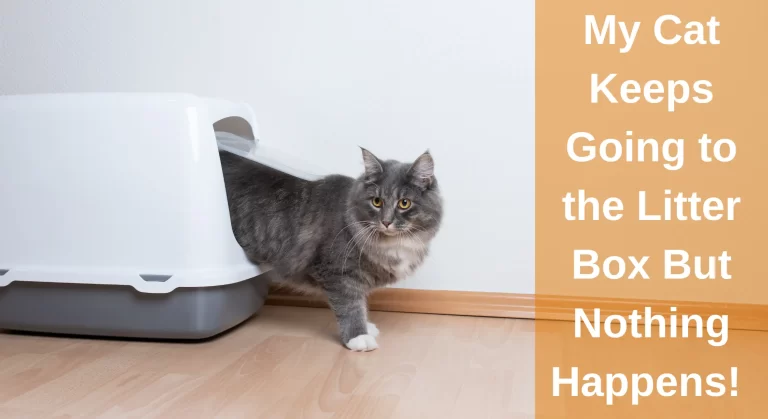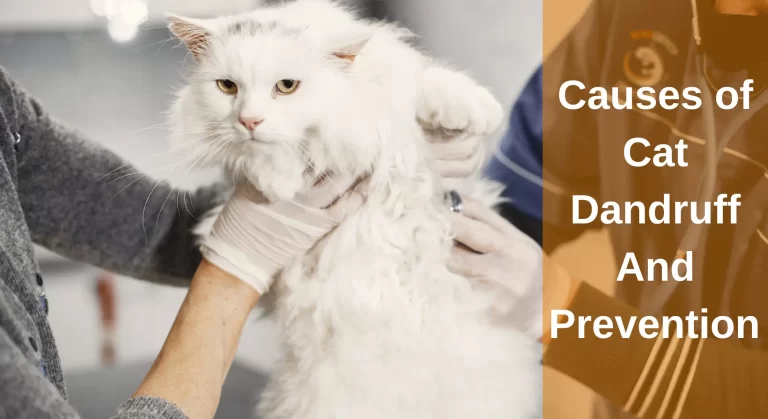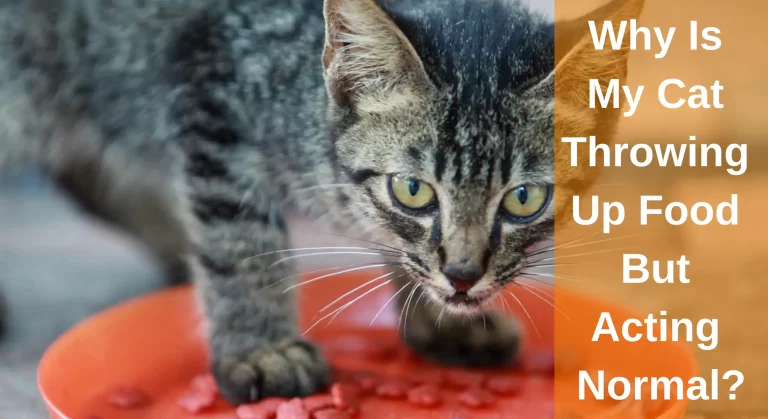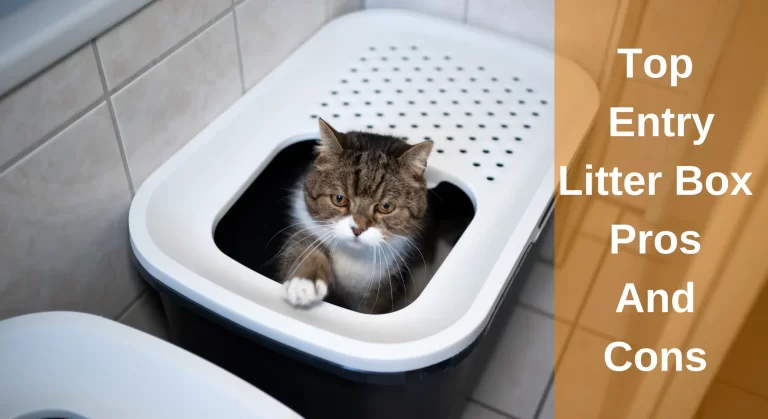Ultimate Training Manual: How To Train Your Cat? Cat Training 101
Training a cat can be a rewarding and enjoyable experience for both you and your feline companion. While cats are known for their independence, they are also capable of learning various behaviors and tricks through positive reinforcement. Training a cat not only enhances their skills but also strengthens the bond between the cat and its owner.”How to train your cat”?
To train a cat, start by creating a calm and safe environment and gather the necessary supplies for training. Use positive reinforcement techniques, such as treats and praise, to reward desired behaviors. Start with basic commands like “come” and “sit,” gradually progressing to more advanced tricks. Be patient, consistent, and remember to keep training sessions short and engaging.
In this article, we will guide you through the process of training your cat, from setting up a conducive environment to teaching basic commands and addressing common challenges. Whether you have a new kitten or an older cat, these training techniques will help you build a stronger bond and create a harmonious relationship with your pet.
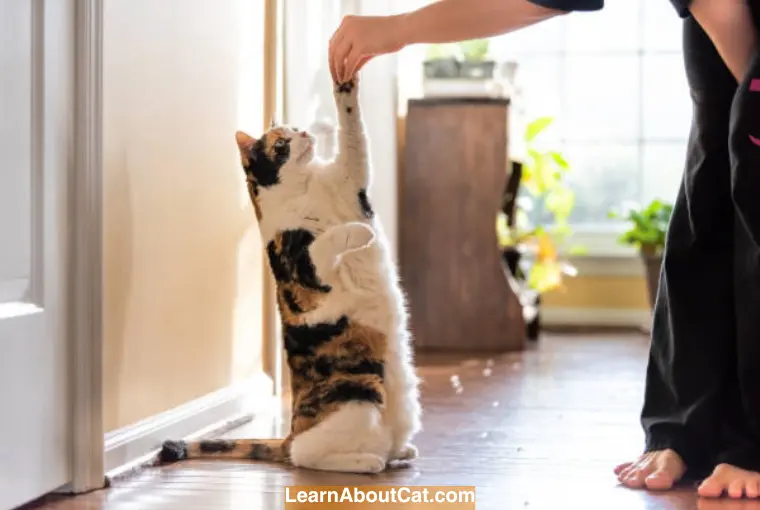
Why Cat Training is Important
1. Strengthening the Bond
Training sessions provide an opportunity to strengthen the bond between you and your cat. It allows for quality one-on-one interaction and builds trust. As your cat learns to understand your cues and commands, the communication between you becomes more effective. This bond strengthens the foundation of your relationship and enhances the mutual understanding and connection you share.
2. Mental Stimulation
Training exercises your cat’s mind and provides essential mental stimulation. Cats are naturally curious and intelligent creatures, and training engages their cognitive abilities. It challenges them to think, problem-solve, and learn new behaviors or tricks. Mental stimulation through training can prevent boredom, reduce stress, and promote a healthier and happier cat.
3. Reducing Undesirable Behaviors
Training helps address and reduce undesirable behaviors in cats. By teaching them alternative behaviors or providing appropriate outlets for their instincts, you can redirect their energy and prevent destructive habits. For example, training your cat to use a scratching post instead of furniture or to use a litter box can significantly improve your living environment and the overall harmony between you and your cat.
4. Ensuring Safety
Training your cat can help keep them safe. Teaching them to respond to recall commands or to walk on a leash allows for better control in potentially dangerous situations. A well-trained cat is more likely to avoid hazards, such as crossing busy roads or approaching unfamiliar animals, reducing the risk of accidents or injuries.
5. Easier Veterinary Care
Cats are notorious for disliking visits to the veterinarian. However, through training, you can familiarize your cat with handling and basic procedures, making vet visits less stressful for both of you. Training your cat to tolerate nail trims, teeth brushing, or being placed in a carrier can simplify veterinary care and ensure your cat receives the necessary healthcare without undue anxiety.
What to Know Before You Start Cat Training: Tips and Guidelines
Before you embark on the journey of training your cat, it’s important to understand a few key factors that will contribute to a successful training process.
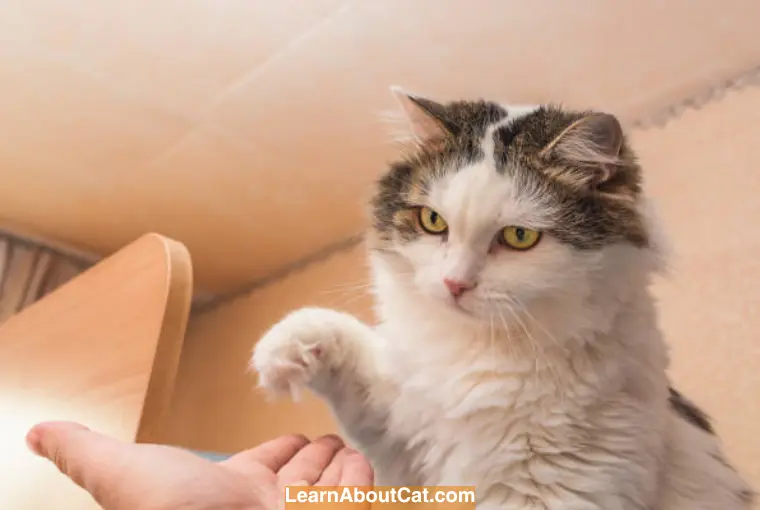
Understand Your Cat’s Personality and Learning Style
Each cat has a unique personality and learning style. Some cats may be more food-motivated, while others may respond better to play or affection. Take the time to observe and understand your cat’s preferences and adapt your training techniques accordingly. Tailor the training sessions to suit their individual needs, and be flexible in your approach to accommodate their learning style.
Determine the Ideal Timing
Cats follow a predictable daily routine of hunting (playing), eating, grooming, and sleeping. Therefore, it’s important to schedule your training sessions accordingly. Try training your cat immediately after they wake up from a nap, as they will be ready to engage in play and more likely to concentrate. Moreover, they are likely to be hungry, which means they will exert extra effort for those delicious treats.
Minimize Distractions: Preparing Your Training Space
A distracted cat cannot focus properly. Find a quiet location, away from other pets and family members, for your training sessions. Any background noise can disrupt your cat’s concentration and render the training session unproductive. Ensure the room is well-ventilated and has enough space for your cat to move around comfortably.
Maintain Consistent Cues
To avoid confusion, use consistent signals or cues for the desired commands. This could involve hand signals or verbal cues. Ensuring that all family members are familiar with the correct signals and cues will help maintain consistency throughout the training process.
Focus on one Skill at a Time
Attempting to teach a cat multiple skills simultaneously can overwhelm them. It is best to focus on teaching one skill at a time. Once your cat has mastered a particular skill, then you can move on to the next one.
Patience and Consistency Are Keys
Training a cat requires patience and consistency. Unlike dogs, cats have independent personalities and may take longer to grasp certain commands or behaviors. It’s essential to approach training sessions with a calm and patient demeanor. Remember to celebrate even the smallest achievements and avoid becoming frustrated or discouraged. Consistency in your training methods and expectations will help your cat understand what is expected of them.
Use Positive Reinforcement
Positive reinforcement is a highly effective training technique for cats. Rewarding your cat with treats, praise, or playtime when they exhibit the desired behavior reinforces their understanding of what you want from them. Cats respond well to rewards and positive experiences, so focus on rewarding good behavior rather than punishing unwanted behavior. This will create a positive association with the training process and motivate your cat to continue learning.
Start with Basic Commands and Behaviors
When beginning cat training, it’s best to start with basic commands and behaviors. Focus on commands such as sit, stay, and come, and simple behaviors like using the litter box or scratching post. These foundational commands will lay the groundwork for more advanced training in the future. Starting with achievable goals will build your cat’s confidence and set a positive tone for the training process.
Keep Training Sessions Short and Engaging
Cats have short attention spans, so it’s important to keep training sessions brief and engaging (5-10 minutes long.). Aim for multiple short sessions throughout the day rather than one long session. This will prevent your cat from becoming bored or disinterested. Use interactive toys, treats, and positive reinforcement to keep your cat engaged and motivated during the training sessions.
Emphasize Repetition
Repetition is key to reinforcing your cat’s behavior. Once your cat has successfully learned a skill, make sure to practice it frequently outside of the training sessions, so that your cat doesn’t forget it.
Respect Your Cat’s Limits
It’s crucial to respect your cat’s limits during training. Pushing your cat too far or overwhelming them with too many stimuli can lead to stress and reluctance to participate. Pay attention to your cat’s body language and cues. If they show signs of discomfort or stress, take a step back and give them time to relax. Gradually introduce new commands or behaviors at a pace that is comfortable for your cat.
Necessary Cat Training Tools
To effectively train your cat, certain tools can be helpful:
- Treats: Unlike dogs, cats won’t display the same level of enthusiasm and eagerness to learn unless the rewards are truly enticing. To optimize your training sessions, ensure that you have an ample supply of their favorite treats and delectable cat food. Choose small, soft, and easily consumable treats that your cat finds irresistible.
- Clicker: A clicker is a handheld device that makes a distinct clicking sound when pressed. It is used to mark desired behaviors and reinforces positive associations during training. Pair the clicker sound with a treat to communicate to your cat that they have performed the correct behavior.
- Toys: Interactive toys can be used as rewards during training or to engage your cat in play, which aids in positive reinforcement. Toys with feathers, lasers, or puzzle toys provide mental and physical stimulation.
- Harness and Leash: If you plan to train your cat for outdoor adventures or leash walking, a secure and comfortable harness and a lightweight leash are necessary. Choose a harness specifically designed for cats to ensure their safety and comfort.
Basic Training for Cats: Teaching Essential Skills
Basic training for cats is essential to establish a strong foundation of obedience and communication.
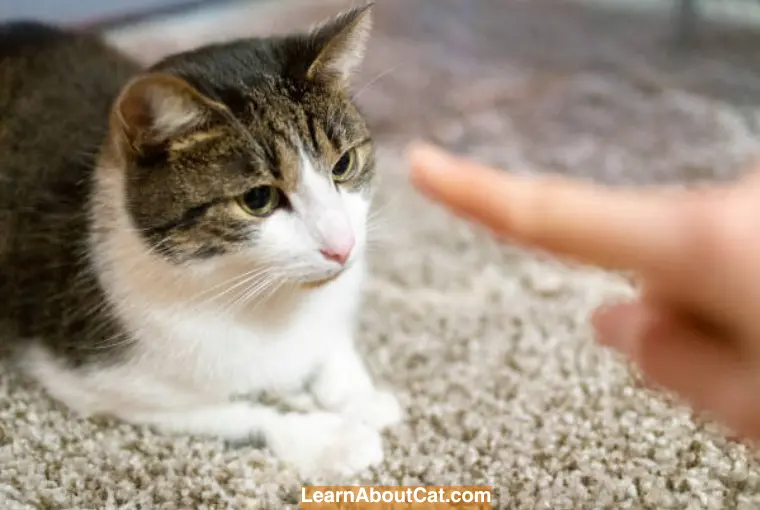
1. Sit
Teaching your cat to sit is a fundamental command that provides control and establishes boundaries. Follow these steps to train your cat to sit:
- Hold a treat close to your cat’s nose, and slowly move it upward.
- As your cat follows the treat with their gaze, their natural response will be to lower its rear end, resulting in a sitting position.
- As soon as their bottom touches the ground, say “sit” and reward them with the treat and praise.
- Repeat this process, gradually phasing out the use of treats and relying solely on verbal cues and praise.
Consistency and positive reinforcement are key to successfully training your cat to sit.
2. Stand Up
Training your cat to stand up on its hind legs is not only entertaining but also helps during grooming sessions or medical examinations. Here’s how you can teach your cat to stand up:
- Hold a treat above your cat’s head, slightly out of reach.
- As your cat reaches upward to grab the treat, say “Stand up” and reward them with the treat.
- Repeat the process, gradually requiring your cat to stand for a longer duration before receiving the reward.
- Gradually phase out the treat and rely solely on verbal cues and praise.
Consistency, positive reinforcement, and short training sessions will help your cat learn to stand up on command.
3. Lay Down
Training your cat to lie-down on command is helpful for relaxation and calmness. Follow these steps to teach your cat to lay down:
- Start in a quiet and familiar environment.
- Hold a treat close to your cat’s nose and gradually move it down toward the ground.
- As your cat follows the treat and lowers their body, say “lay down” and reward them with the treat.
- Repeat the process, gradually requiring your cat to lie down for a longer duration before receiving the reward.
- Practice in different locations to generalize the command.
Patience, positive reinforcement, and rewarding incremental progress will aid in training your cat to lay down.
4. Coming When Called
Teaching your cat to come when called is important for their safety and your peace of mind. Here’s how to train your cat to respond to their name or a specific recall command:
- Start training in a quiet and familiar space with minimal distractions.
- Say your cat’s name or the recall command in a clear and friendly tone, followed by a treat or a favorite toy as a reward.
- Repeat this process frequently, gradually increasing the distance between you and your cat.
- As your cat becomes more responsive, introduce the recall command in different environments and situations.
- Always reward your cat for coming to you promptly.
Patience and consistency are essential when training your cat to come when called.
5. Stay On Your Mat
Teaching your cat to stay and settle on their mat is useful for various situations, such as mealtime or when guests visit. Follow these steps to train your cat to stay and be on their mat:
- Choose a designated mat or blanket and place it in a quiet area.
- Encourage your cat to step onto the mat using treats or gentle guidance.
- Once your cat is on the mat, say “stay” and offer a reward.
- Gradually increase the duration of time your cat stays on the mat before giving the reward.
- Repeat the process, gradually adding distance between you and the mat.
Consistency, patience, and positive reinforcement will help your cat learn to stay and settle on their mat.
6. Shake Hands
Teaching your cat to shake hands is an impressive trick that showcases their intelligence and agility. Here’s how you can train your cat to shake hands:
- Hold a treat in your hand and present it to your cat.
- As your cat reaches out to touch your hand, say “shake” and reward them with the treat.
- Repeat the process, gradually extending your hand further away to encourage a paw shake.
- When your cat consistently offers their paw, introduce the verbal cue before offering your hand.
With practice and positive reinforcement, your cat can learn to shake hands on command.
7. High Five
Teaching your cat to give a high five is a fun and interactive trick that strengthens the bond between you and your feline friend. Follow these steps to train your cat to perform a high five:
- Hold a treat in your closed fist, presenting it to your cat.
- As your cat tries to reach for the treat, wait for them to raise a paw and make contact with your hand.
- As soon as their paw touches your hand, say “high five” and open your hand to let them have the treat.
- Repeat this process, gradually introducing the verbal cue before offering your hand.
- With practice, your cat will learn to associate the verbal cue with the action of raising their paw.
Training your cat for a high five requires patience, repetition, and positive reinforcement.
8. Jump
Teaching your cat to jump on command can be both entertaining and useful. Whether you want them to jump onto a designated area or navigate obstacles, follow these steps to train your cat to jump:
- Use a target stick or a small wand with a treat attached to encourage your cat to jump toward it.
- Begin with a low target, gradually raising it as your cat becomes comfortable with the jumping motion.
- As your cat successfully jumps towards the target, reward them with a treat and praise.
- Gradually phase out the use of the target stick and rely on verbal cues to prompt the jumping behavior.
- Practice regularly, gradually increasing the height or distance of the jumps.
Training your cat to jump requires patience, positive reinforcement, and careful monitoring of their comfort and physical abilities.
9. Fetch
Playing fetch with your cat is an excellent way to provide mental and physical stimulation. Follow these steps to train your cat to fetch:
- Start with a small toy or a soft ball that your cat finds interesting.
- Encourage your cat to chase the toy by tossing it a short distance.
- Once your cat retrieves the toy, reward them with praise and a treat.
- Gradually increase the distance of the tosses and reward your cat each time they retrieve the toy.
- With time and practice, your cat will learn to bring back the toy to initiate another round of play.
Patience, positive reinforcement, and using toys that capture your cat’s attention are key to successful fetch training.
10. Leash Training
Leash training allows you to take your cat on outdoor adventures safely. Here’s how to leash-train your cat:
- Introduce your cat to the harness gradually, allowing them to sniff and explore it before putting it on.
- Once your cat is comfortable with the harness, attach the leash and let them walk around indoors.
- Encourage your cat with treats and praise when they walk beside you on the leash.
- Gradually introduce outdoor environments, starting with quiet and familiar spaces.
- Be patient and allow your cat to adjust to the sights, sounds, and smells of the outdoors at their own pace.
Consistency, positive reinforcement, and gradual exposure to the outdoors will help your cat become comfortable with leash training.
Also Read: Will My Cat Come Back If I Let Him Outside? Curiosity Unleashed
Basic Training for Cats: Addressing Common Behavioral Challenges
Basic training for cats goes beyond teaching commands and tricks. It also involves addressing common behavioral challenges that can arise in their daily lives.
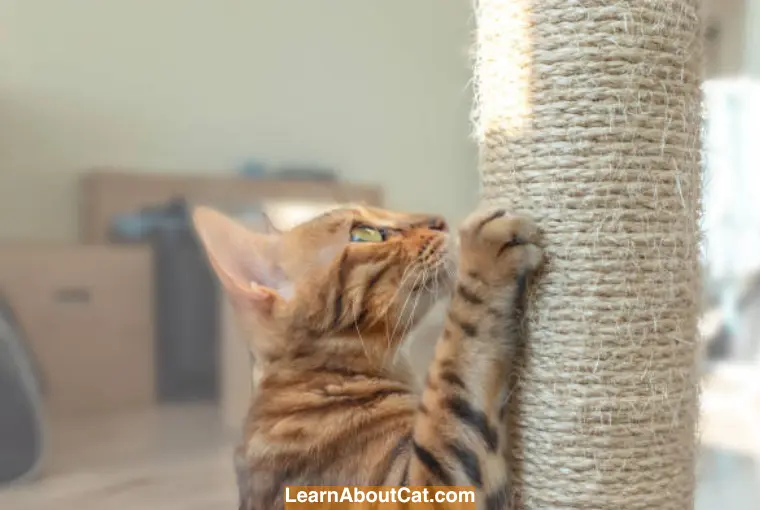
1. Stopping Furniture Scratching
Furniture scratching is a natural behavior for cats, but it can become problematic when directed toward your valuable belongings. To redirect your cat’s scratching behavior, follow these steps:
- Provide appropriate scratching posts or boards in multiple locations throughout your home.
- Encourage your cat to use the scratching posts by rubbing them with catnip or using interactive toys.
- Whenever you catch your cat scratching furniture, gently redirect their attention to the appropriate scratching surface.
- Reward and praise your cat when they use the scratching post or board.
Consistency and providing attractive alternatives are key to addressing furniture scratching.
2. Stopping Counter Surfing
Counter surfing, where cats jump onto countertops or tables to explore or steal food, can be challenging to address. Here are some tips to discourage counter-surfing:
- Clear off counters and tables, removing any tempting objects or food.
- Use deterrents like aluminum foil, double-sided tape, or motion-activated devices to make countertops unappealing to your cat.
- Provide alternative elevated surfaces or cat towers where your cat can perch and observe their surroundings.
- Reward your cat for using appropriate elevated surfaces and redirect them if they attempt to jump onto countertops.
Patience, consistency, and environmental management are crucial in addressing counter-surfing behaviors.
3. Stopping Biting or Kicking with Hind Legs
Biting or kicking with hind legs can be a playful behavior for cats but may become aggressive or unwanted. To address this behavior:
- Redirect your cat’s attention to appropriate toys when they exhibit biting or kicking behavior.
- Avoid using your hands or feet as play objects to prevent reinforcement of this behavior.
- Provide interactive toys that allow your cat to engage in hunting and pouncing behaviors.
- If the behavior persists, make a loud noise or use a deterrent, such as a water spray, to discourage it.
- Seek professional advice from a veterinarian or animal behaviorist if the biting or kicking behavior is aggressive or concerning.
Consistency, appropriate play outlets, and redirection are important in addressing biting or kicking behaviors.
Interesting Reading: Why Does My Cat Bite Me When I Pet Her? (Cat Love Bites)
4. Stopping Destructive Chewing
Cats may engage in destructive chewing, particularly with cords, cables, or household items. Here’s how to address this behavior:
- Provide appropriate chew toys and interactive puzzles to redirect your cat’s chewing behavior.
- Keep valuable or dangerous items out of your cat’s reach or use deterrents to make them unappealing.
- Spray bitter apple or a cat-safe deterrent on objects that are prone to chewing.
- Provide regular play sessions and environmental enrichment to keep your cat mentally and physically stimulated.
- If the behavior continues, consult with a veterinarian to rule out any underlying medical or dental issues.
Supervision, environmental management, and providing suitable alternatives are essential in addressing destructive chewing.
5. Stopping Yowling for Food
Cats may yowl or vocalize excessively when they are hungry or seeking attention. To address yowling for food:
- Establish a consistent feeding schedule and stick to it.
- Ignore the yowling behavior and avoid reinforcing it with attention or food.
- Provide interactive toys and engage in play sessions to keep your cat mentally stimulated.
- Use puzzle feeders or food-dispensing toys to provide mental stimulation during mealtime.
- If the behavior persists, consult with a veterinarian to rule out any underlying medical conditions.
Consistency, environmental enrichment, and meeting your cat’s nutritional needs can help reduce yowling for food.
6. Eating Houseplants
Eating houseplants can be harmful to cats, as some plants are toxic. To deter your cat from eating houseplants:
- Remove toxic plants from your home or place them in areas inaccessible to your cat.
- Provide safe and cat-friendly plants for your cat to chew on, such as cat grass or catnip.
- Use deterrents like bitter apple spray or aluminum foil to make plants unappealing.
- Create designated play areas and provide interactive toys to redirect your cat’s attention.
- Regularly monitor your cat’s behavior around plants and intervene if necessary.
Careful plant selection, supervision, and providing suitable alternatives are crucial in preventing cats from eating houseplants.
Basic Training for Cats: Reinforcing Good Behavior
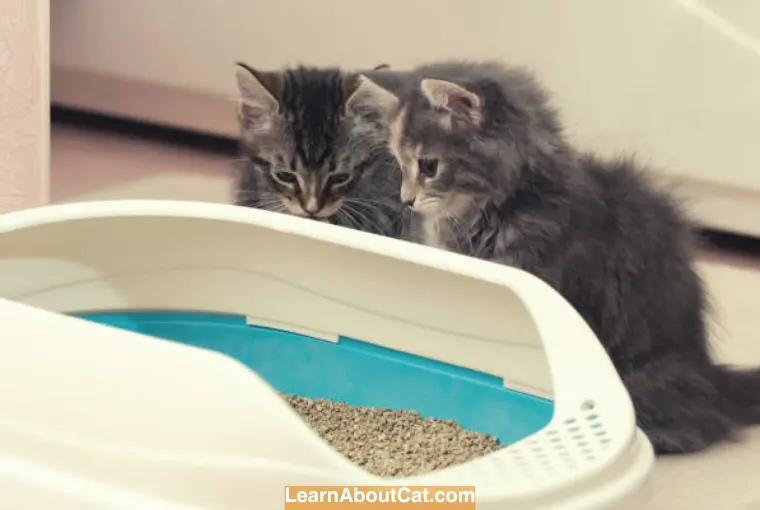
1. Litter Training
Litter training is essential for maintaining cleanliness and ensuring that your cat has an appropriate place to eliminate. Here are some steps to effectively litter train your cat:
- Choose an appropriate litter box and litter type based on your cat’s preferences.
- Place the litter box in a quiet and easily accessible location.
- Show your cat the litter box and gently place them in it after meals or naps.
- If your cat eliminates outside the litter box, clean the area thoroughly and place the waste in the litter box to encourage proper association.
- Reward your cat with treats or praise when they use the litter box correctly.
Consistency, patience, and maintaining a clean litter box are key to successful litter training.
2. Carrier Training
Carrier training helps make visits to the veterinarian or traveling with your cat less stressful for both of you. Follow these steps to train your cat to be comfortable in a carrier:
- Start by introducing the carrier as a positive and safe space. Place treats, bedding, and toys inside the carrier to encourage exploration.
- Gradually associate the carrier with positive experiences by feeding your cat meals inside or near it.
- Once your cat is comfortable entering the carrier, close the door for short durations and gradually increase the time.
- Take short trips around the house or too familiar places, rewarding your cat with treats and praise for calm behavior.
- Gradually extend the duration of trips and expose your cat to different environments, always ensuring their safety and comfort.
Carrier training requires patience, positive reinforcement, and gradual exposure to new experiences.
Find Out: Why Do Cats Pant in Car? And How To Help
3. Socializing Your Cat
Socializing your cat is essential for their well-being and helps them become comfortable in various social situations. Here are some tips for socializing your cat:
- Gradually introduce your cat to new people, animals, and environments, starting with calm and controlled settings.
- Use positive reinforcement, treats, and praise to associate positive experiences with social interactions.
- Provide hiding spots, perches, and safe spaces where your cat can retreat when feeling overwhelmed.
- Gradually increase the duration and intensity of socialization sessions as your cat becomes more comfortable.
Consistency, patience, and positive experiences are key to successfully socializing your cat.
Explore More: What Do Cats See When They Look at Humans? Surprising Facts
Don’ts of Cat Training
There are certain things you should avoid, here are some “Don’ts” of cat training:
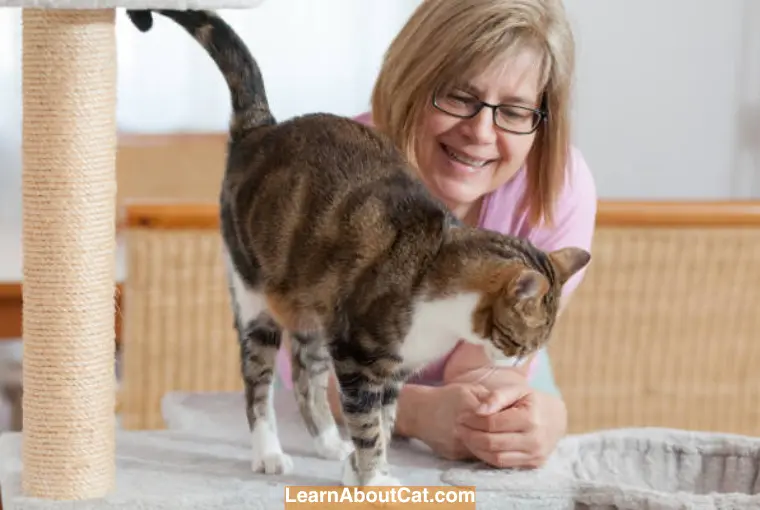
- Don’t use punishment: Avoid using harsh punishments or physical force as it can create fear and anxiety in your cat, hindering the training process and damaging your relationship.
- Don’t yell or shout: Cats respond better to calm and gentle communication. Yelling or shouting can confuse and scare them, making it harder for them to understand what you want them to learn.
- Don’t force or overwhelm: Respect your cat’s boundaries and don’t force them into situations or behaviors they’re uncomfortable with. Gradual and patient training is key to success.
- Don’t give up too soon: Training takes time and consistency. Don’t get discouraged if progress is slow. Stay committed, be positive, and celebrate small achievements along the way.
Frequently Asked Question
How long does it take to train a cat?
The duration of cat training varies depending on the individual cat and the complexity of the behaviors being taught. Some cats may pick up basic commands relatively quickly, while others may require more time and patience. Consistency and positive reinforcement are key factors in successful training. In general, it can take weeks or even months to see significant progress.
Can older cats be trained?
Yes, it is possible to train older cats. While they may take longer to adapt to new behaviors, older cats can still learn and respond to training. It’s important to be patient and adjust your training methods to accommodate their age and abilities.
What if my cat doesn’t respond to training?
Cats have their own unique personalities and learning styles. If your cat is not responding to training, it may be helpful to reassess your training methods and make adjustments. Consider seeking guidance from a professional animal behaviorist who can provide personalized advice and techniques tailored to your cat’s needs.
Conclusion
Cat training is a valuable endeavor that allows for a deeper connection and understanding between cats and their owners. By employing positive reinforcement techniques, consistency, and patience, it is possible to shape desired behaviors and address common challenges.
Training not only improves the cat’s behavior but also contributes to its overall well-being and happiness. It is important to approach training with a tailored and individualized approach, considering the unique personality and learning style of each cat.
Remember to create a positive and stimulating training environment, celebrate small victories, and seek professional guidance when needed. With dedication and love, cat training can be a rewarding and fulfilling journey for both the owner and the feline companion.
Related Posts:
Who is Isabella?
My name is Isabella, and I am a dedicated and knowledgeable cat enthusiast. With years of experience caring for cats and a deep love for felines, I made a mission to help other cat lovers navigate the challenges of cat ownership.

